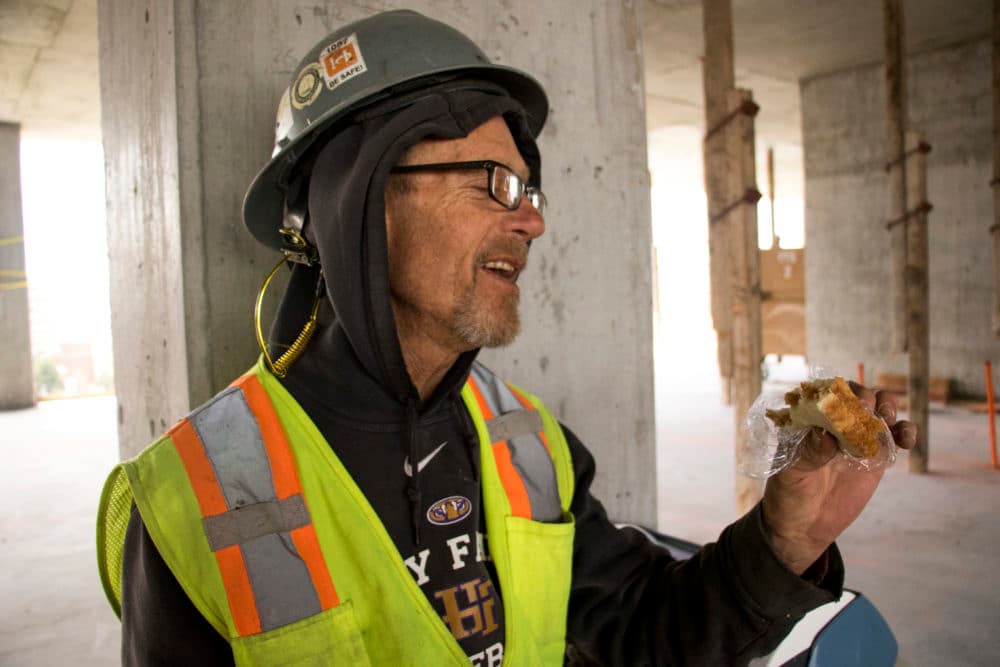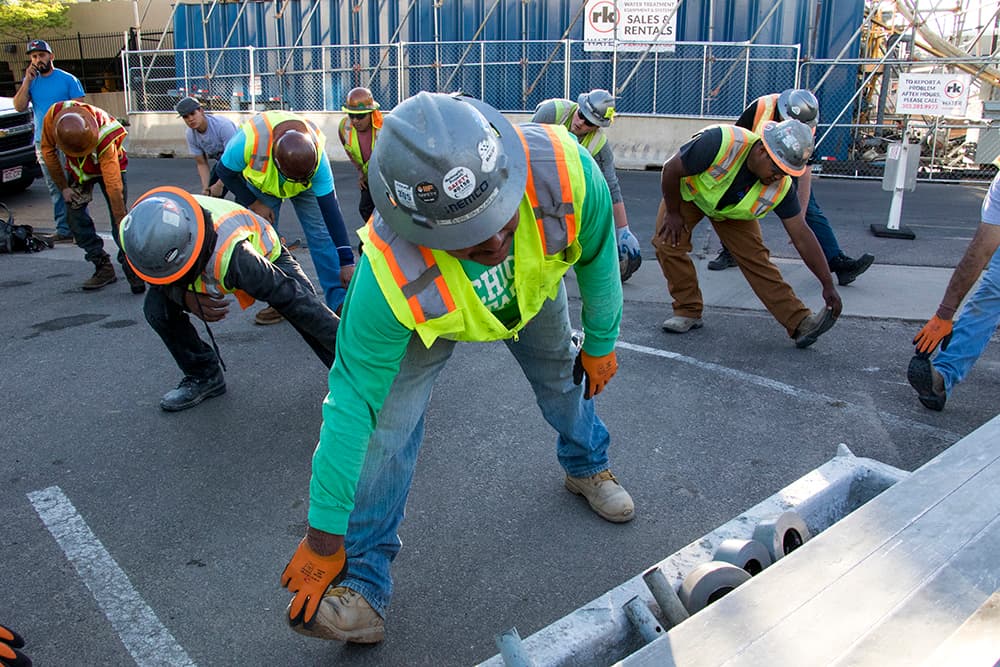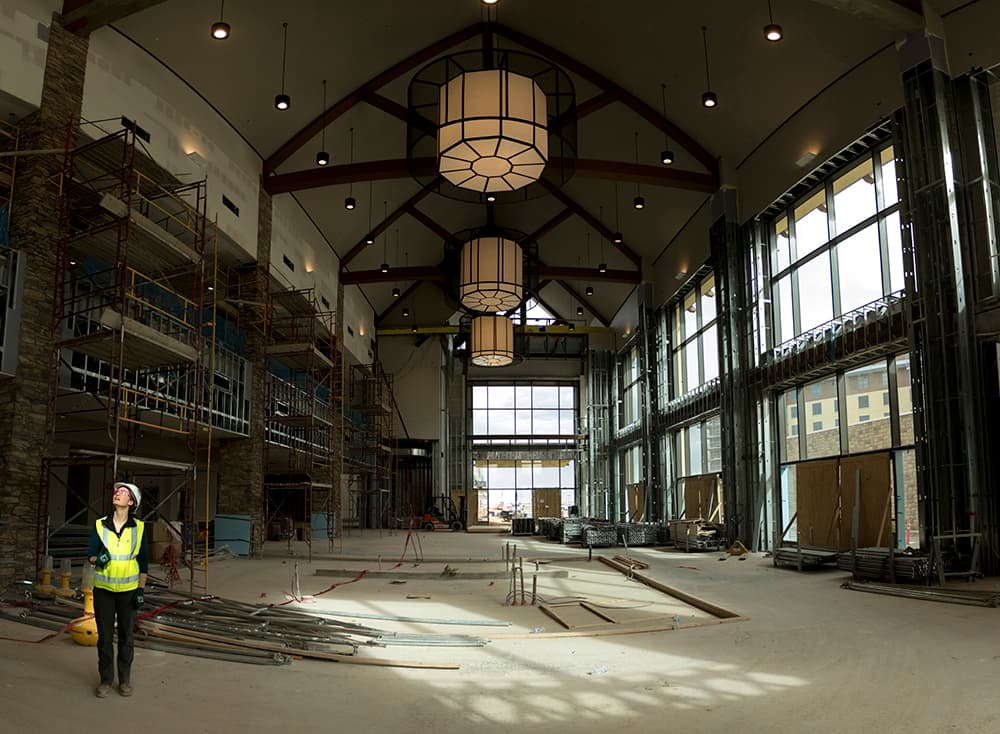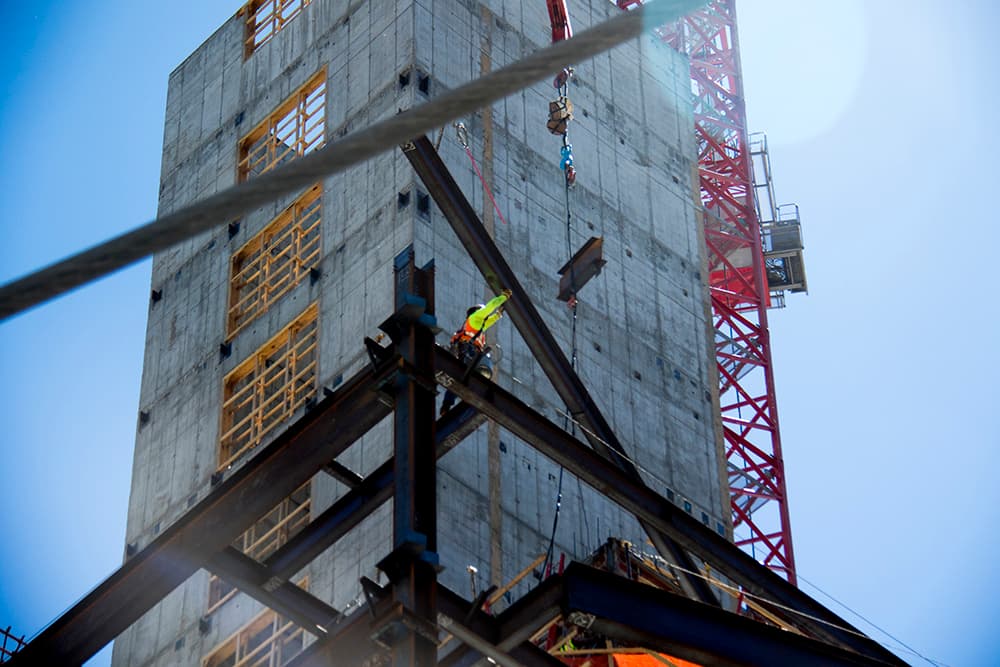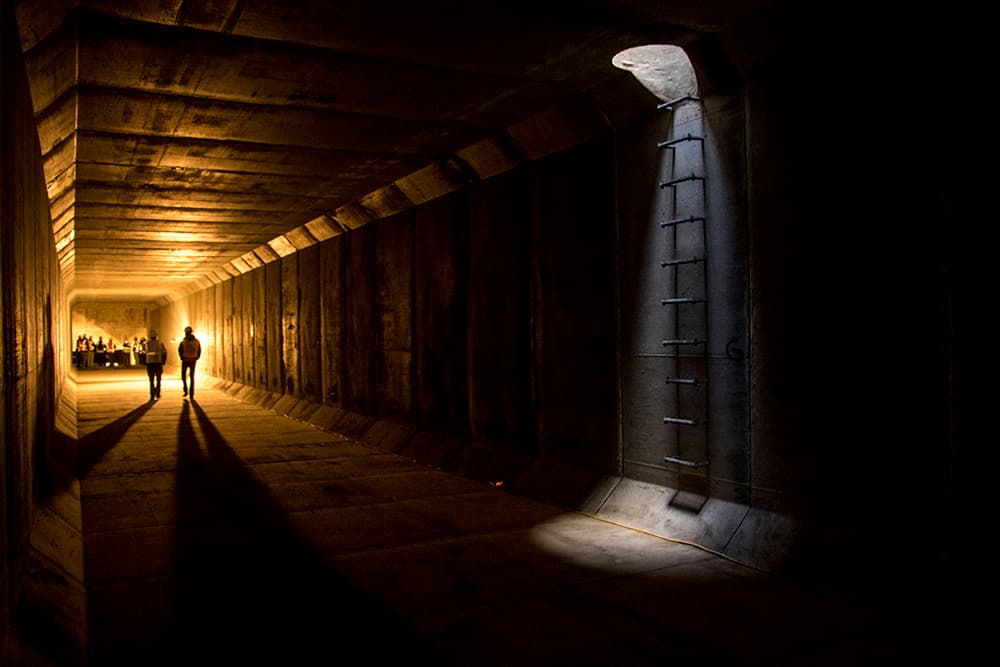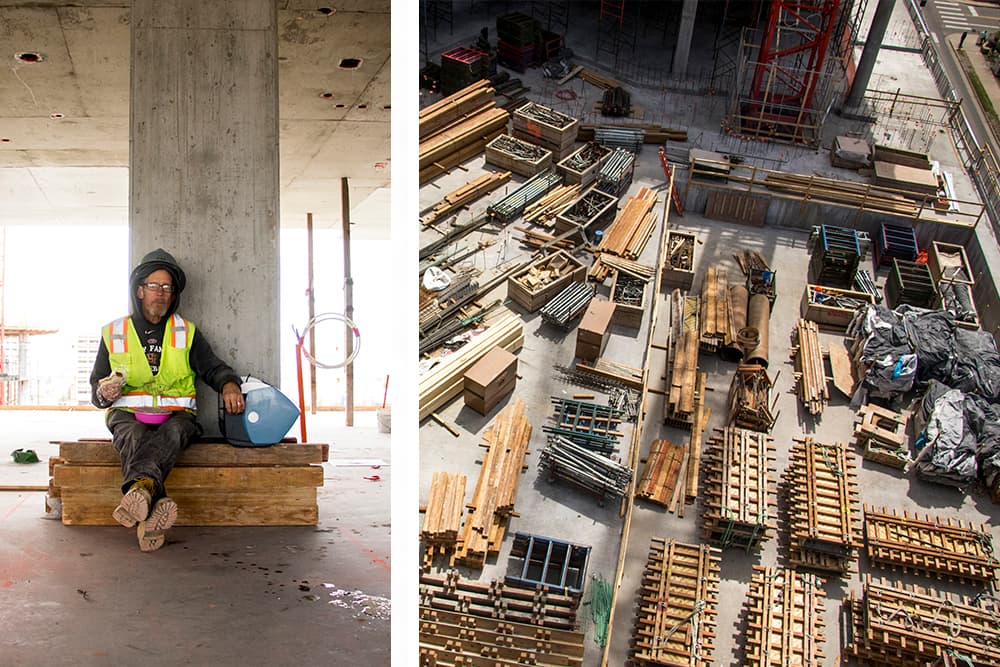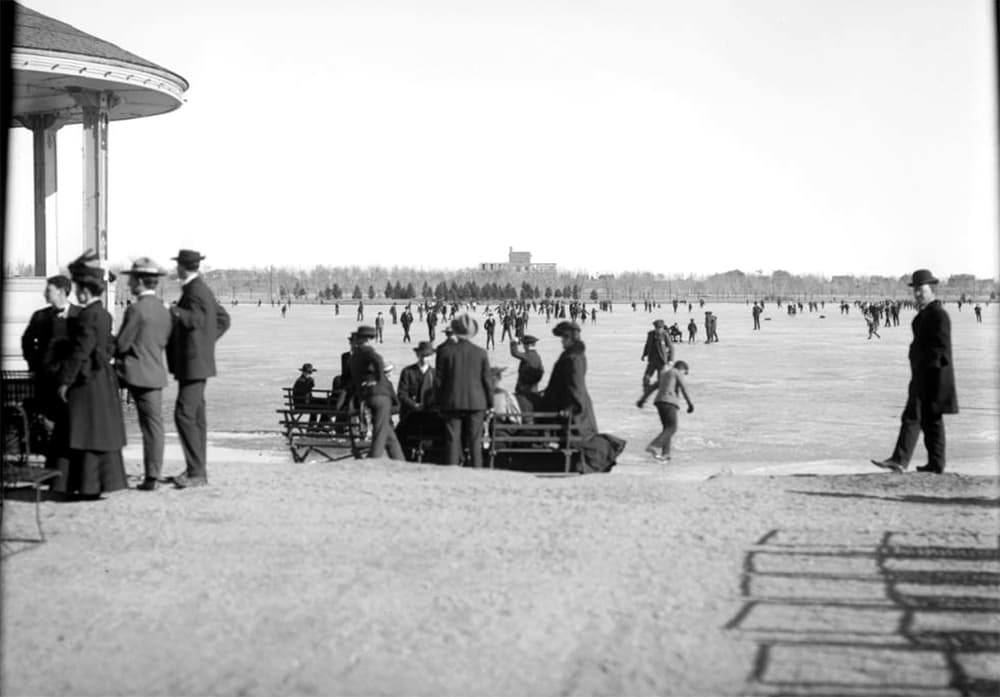Lunchtime for Daniel Quinlaven comes with a heck of a view. From the tenth floor of the construction site at 10th Avenue and Bannock street, where he sits with his sandwich, he can see over the Denver Art Museum clear to downtown. Quinlaven grew up just a few miles from here, and he's watched that skyline explode with change as he's helped build it.
"The way this city is growing is remarkable, it's such a whirlwind," he said between bites. "It's a different city than from when I was a kid."
I've been touring construction sites all year to meet the people that are doing the work of creating all that change, and I wanted to know: Can the people building Denver afford to live here? The answer is generally yes, but while rising living costs are motivating people to enter the construction field in the first place, it's getting harder to live in the city.

Rising rent might mean that the people who build Denver no longer live here.
"When I started building fence 20 years ago, I could rent a nice apartment alone," Quinlaven told me. "It's shocking how quickly the scenario in the city changed, but they can't build quote-unquote affordable housing fast enough."
The rising cost of living in the city, at this point, is old news. We've done a lot of reporting on rising numbers of renters who pay more than 30 percent of their incomes, and how wages haven't kept up with housing.
"By a lot of indices, Denver has become one of the least affordable cities in terms of the growth and the housing prices and the average wage of individuals," said Ryan Gedney, a senior economist with the Colorado Department of Labor and Employment. He said state data doesn't go into enough detail to say how many construction who work in Denver actually live here, but it gets close.

Overall, he said about 30 percent of the approximately 500,000 people employed in the city work in the city. For "goods producers," which covers many kinds of labor and includes construction workers, that number drops just a bit below 25 percent.
In my jobsite interviews, that trend seemed more pronounced. Most of the people I spoke to, especially laborers, said they either rent or own homes outside of Denver, where most of the work is. Aurora, Thornton, Westminster, Loveland, and Larkspur were among those locales.
Moving out of town is one way people said they make ends meet.
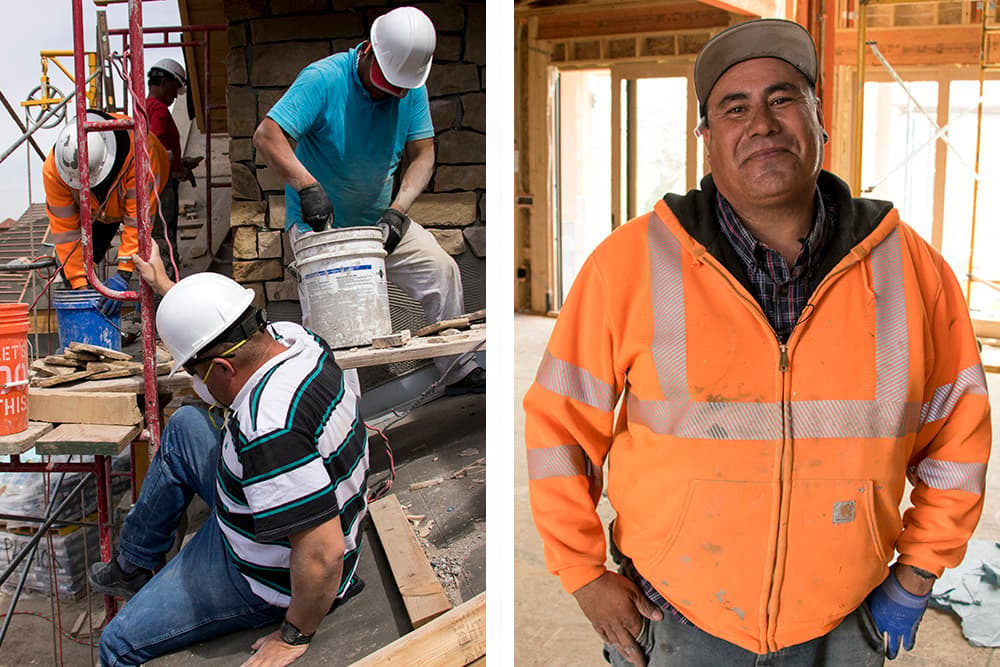
"I don't live in luxury or nothing like that," said Jesse DeLatorre, a site foreman who rents in Aurora. "But you know, I have a son that's going to be a lawyer, I have another son that's in the army, I have one son right now, he just graduated from college in Vegas, you know, all because my kind of work."
Nathan Minter, a general laborer who recently left a career in hospitality, said the money is better (and more regular) than bartending. Living in Denver, though, is still a tough proposition.
"I'm not going to be buying a home anytime soon," he said, "but it's enough to pay the bills and a little bit extra on top."
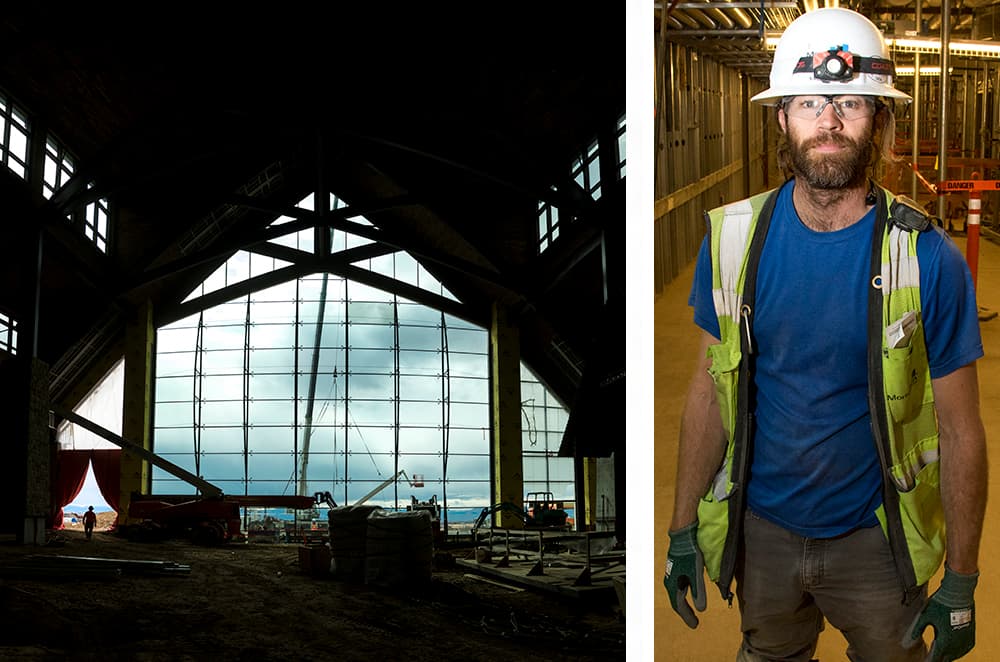
It bears mentioning that construction isn't exactly a low-wage field. Median incomes for unspecialized laborers in Denver is around $35,000 annually. That's higher than what's pegged for photographers and service industry jobs, and it's about on-par with veterinary techs and preschool teachers. On the higher end, septic tank installers, plumbers and electricians can make as much at $75,000 a year.
But even some people I spoke to in skilled, dangerous and highly specific jobs still reported that their income wasn't enough to buy in Denver's market.
"I'm in a two-bedroom apartment paying $900 a month, that's how bad it is," said Jack West, who lives in Denver and operates tower cranes around the city. The job, he said, "it's a pretty good check," but "I couldn't get a house if I tried."
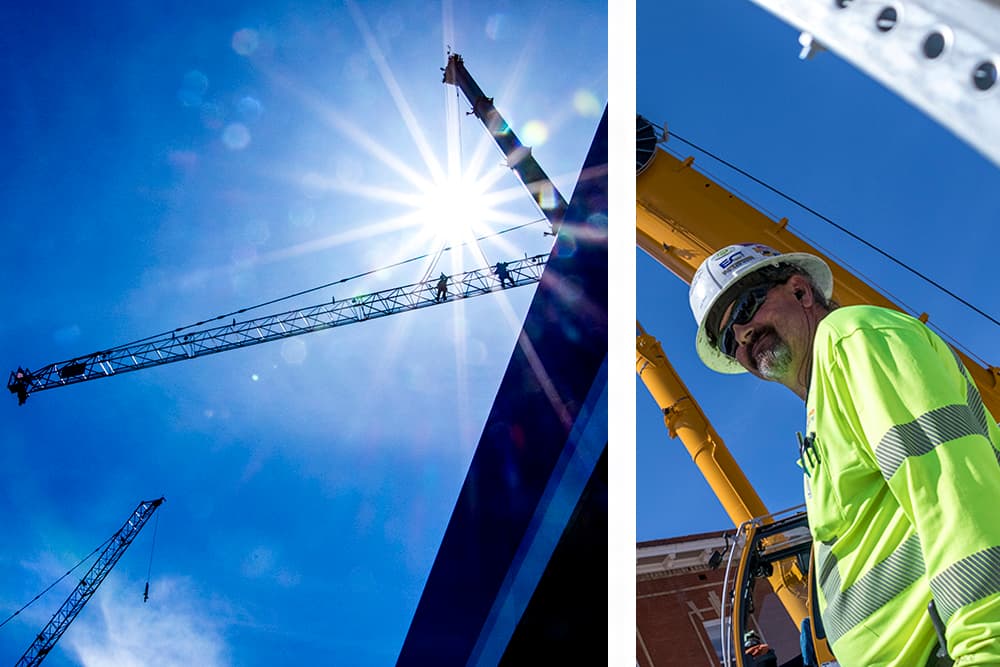
Mark Thompson, a leader with Denver's local carpenters union, said that his members' inability to live close to jobsites has become a problem.
"We want our members to be the little league coaches," he said, and members of the PTA. Driving an hour across town to work makes that tough, and it wasn't always the norm. A lot has changed from the days that unions were strong and building Denver's fledgeling metropolis.
"In the late '60s, '70s, a union carpenter owned his own home, he drove a nice truck -- maybe had a boat that he pulled behind it," Thompson said. "Today, our members are living in some tough parts of town. The hood is up on that truck every weekend, just to make sure he can get to work for another week. Mom is out working because it takes two incomes. Grandma's watching the kids."
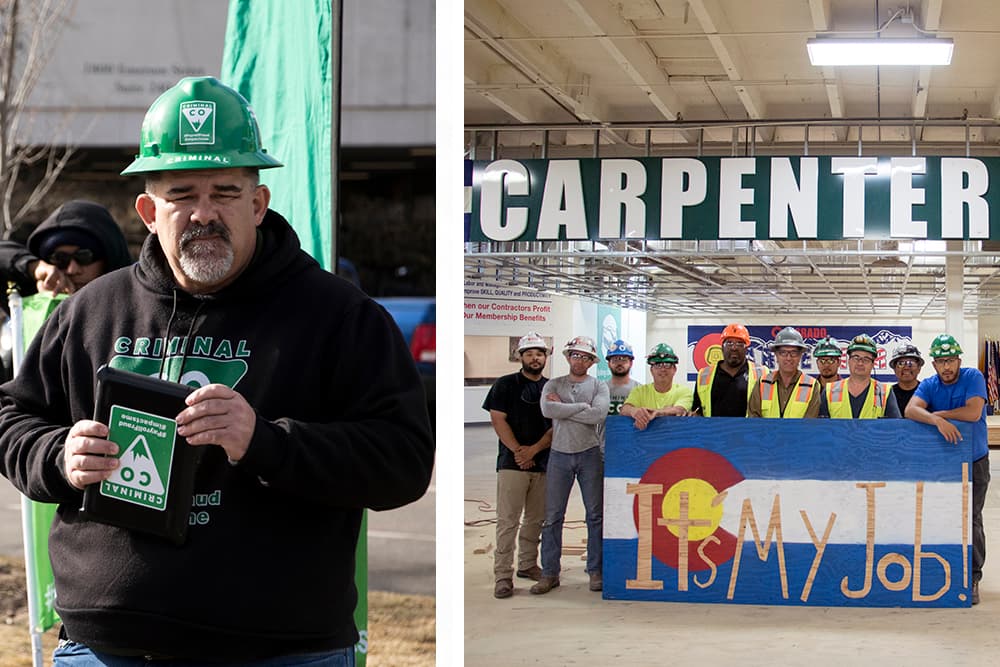
But rising rent is part of what's driving people to construction in the first place.
Construction Careers Now is a free, month-long program aimed at fixing a worker shortage in the construction industry. Their pitch centers around good wages and plenty of opportunities, and there are plenty of eager students ready to take advantage.
At a recent graduation ceremony, those who received diplomas represented a wide range of age, gender and race, but many were united in their motivation for taking the course.
"The rent is going up, the living cost is going up," said Abdel Nouman, a 40-year-old father of three from Morocco. He's worked mostly in restaurants and hospitality since he arrived in Denver 17 years ago. "I'm excited that I passed this class. The next step is finding a good job and moving on with my life."
For some, that growth was a sign that that jobs and better wages were available for the taking.
"We're still reaching for the dollars, the higher paying jobs. We call them the man dollars," said Katrena Duran, making a reference to the gender wage gap. She's 37 and worked previously in landscaping. Duran's been in Denver her whole life: "Born and raised, and we want to make it grow. We want to be part of it."
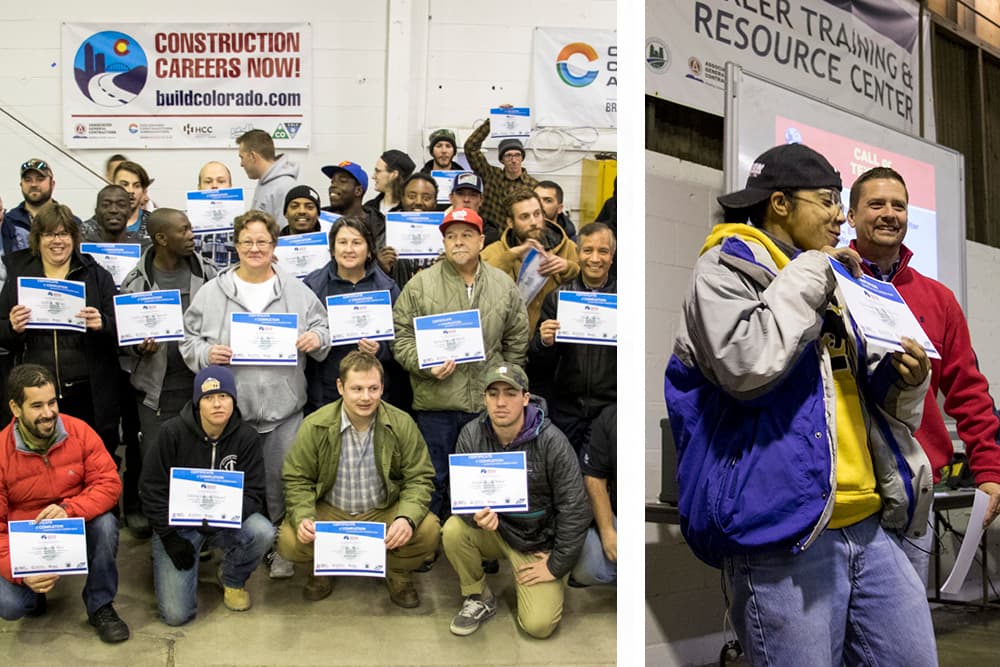
On Denver's jobsites, many said they also entered the industry for financial incentive. It was especially true for immigrants; this group tended to be more satisfied with wages, and many said they left home for a job in the first place.
"I'm alone here, my parents are in Mexico," said Huber Aguirre, an American citizen who moved to Mexico when he was a kid. "It's hard because I miss them, but I needed work, I needed money," and it's good money, too.

Jaime Garcia Sanchez, a roofer who's worked in construction since he left his Mexican farm 14 years ago, shared a similar sentiment.
"I didn't have the money to go to school, or the time. I came here by myself," he said. The money is good enough to support his wife in their rented Aurora home, but even so, he's not sure he'll be buying any time soon. "I was thinking about it, but it's kind of too high for me."
Huber Aguirre's buddy, Jesus Samaniego, also said he can't afford a home right now. But he's hopeful that, with his career on a construction site, he'll be living in one of the houses he's helped build.
"I don't know when. Maybe tomorrow, maybe five years, maybe 10 years," he said, but, "we can one day."
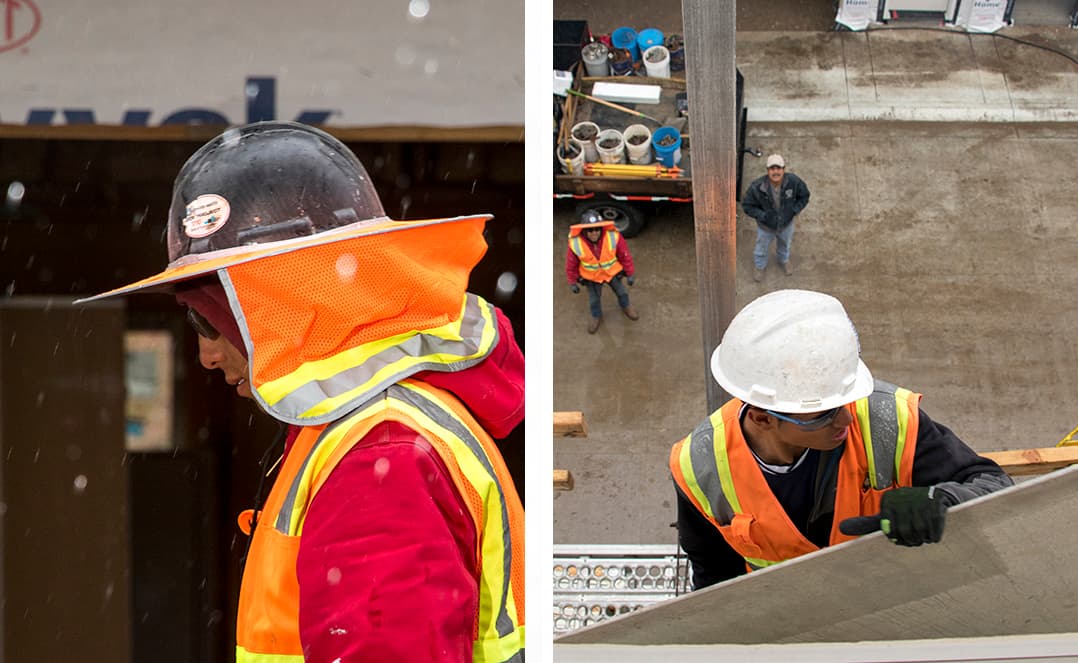
In some ways, the people helping build Denver are helping pave the way for their own ability to stay here, Gedney, the state economist said.
"Given the need for housing and the need to alleviate those higher prices, construction's very vital to filling that housing stock thats required," he said. Denver's booming growth has been a "large driver for our economy in terms of employment. I'd definitely pin construction as kind of a lynchpin here."
For now though, it can still feel like there's a divide between who builds the city and who lives in it.
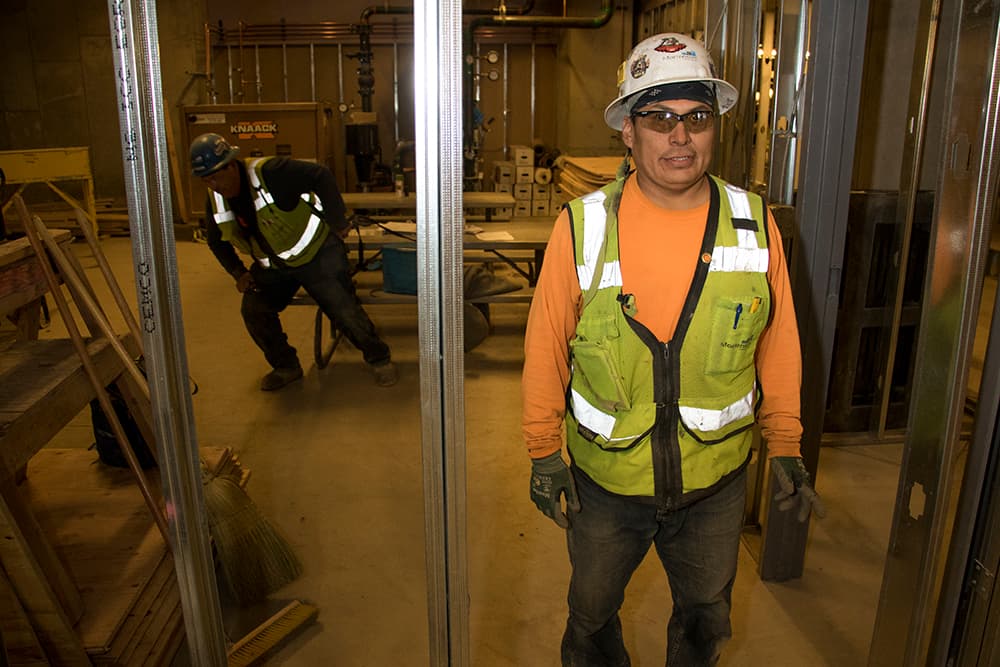
When asked who he thought he was building for, carpenter Gilbert Begay said, flatly, "rich people."
He said he's not sure the people who will eventually use the massive convention center he's working on might ever think about laborers like him. But they should, he said.
"Because they're inside a warm place," he said, and building it took a lot of hard work and people who put their bodies on the line. "It's OK, though ... it's just how it is."
Quinlaven, over his sandwich, said the same: "The people who utilize and live in these buildings here need to appreciate the people that built them. A lot of whom, a very large percentage of whom, are immigrants. And, its ironic that most of them will not have the opportunity to live in these buildings," he said. "The last one we did, we were two years on it, we put two years of our lives into it. And then you walk away. But the people that are, for example, using that Whole Foods Market on 17th and Wewatta: I hope they appreciate how cool that building is. It's a great building."
